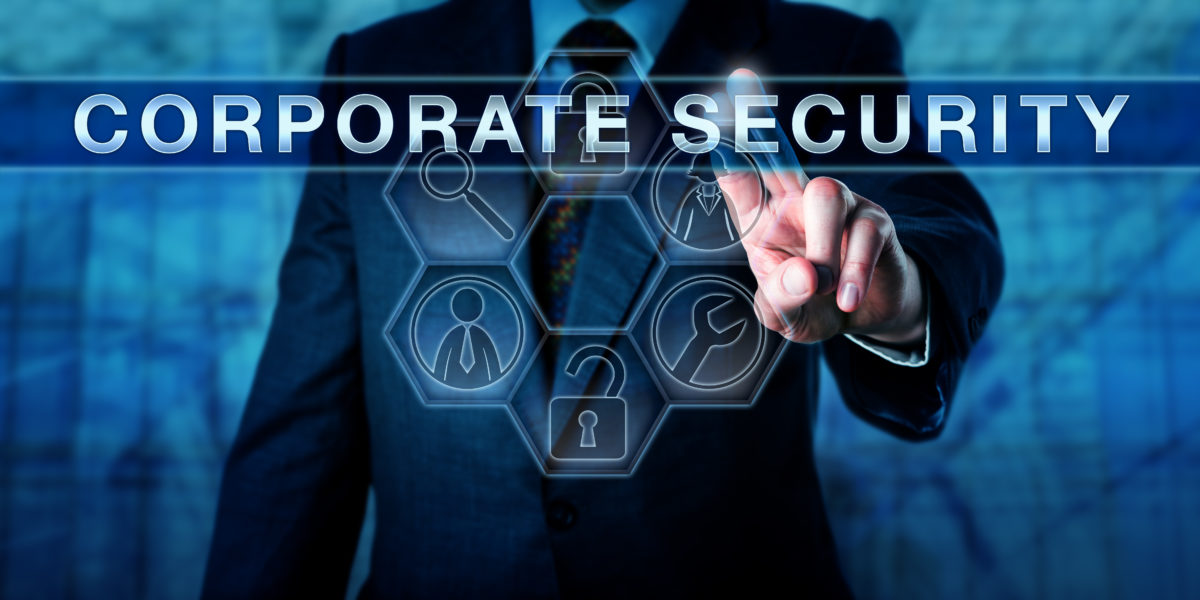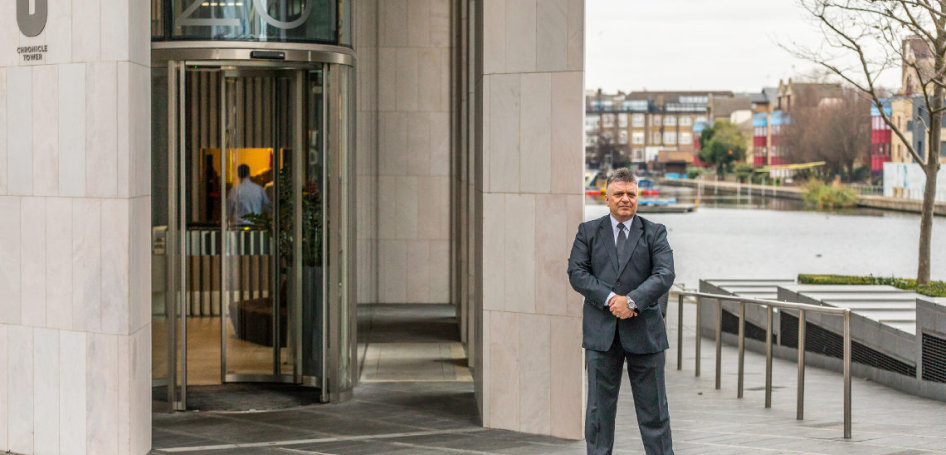Empowering Your Company with Ironclad Corporate Security Steps
Empowering Your Company with Ironclad Corporate Security Steps
Blog Article
From Cybersecurity to Physical Procedures: Enhancing Corporate Security in an Altering World
By incorporating the toughness of both cybersecurity and physical protection, firms can develop an extensive defense technique that deals with the varied array of dangers they encounter. In this discussion, we will check out the altering risk landscape, the demand to incorporate cybersecurity and physical security, the execution of multi-factor verification measures, the significance of employee recognition and training, and the adaptation of safety and security measures for remote labor forces. By examining these key areas, we will gain beneficial understandings right into exactly how organizations can strengthen their company security in an ever-changing globe.
Comprehending the Altering Threat Landscape
The evolving nature of the modern-day world demands a thorough understanding of the transforming danger landscape for efficient corporate protection. In today's electronic and interconnected age, dangers to business security have ended up being much more intricate and advanced. As modern technology breakthroughs and organizations end up being significantly reliant on electronic framework, the capacity for cyberattacks, information breaches, and various other security violations has actually dramatically raised. It is vital for companies to stay educated and adapt their safety determines to deal with these evolving dangers.
One secret element of recognizing the changing threat landscape is recognizing the different types of risks that organizations deal with. Furthermore, physical dangers such as burglary, criminal damage, and business espionage remain common worries for services.
Tracking and examining the hazard landscape is vital in order to determine prospective risks and vulnerabilities. This includes staying upgraded on the most up to date cybersecurity fads, assessing danger intelligence reports, and conducting regular threat analyses. By comprehending the altering risk landscape, organizations can proactively apply proper protection steps to mitigate dangers and safeguard their assets, track record, and stakeholders.
Integrating Cybersecurity and Physical Safety
Incorporating cybersecurity and physical security is vital for detailed business defense in today's interconnected and electronic landscape. As organizations significantly rely upon technology and interconnected systems, the borders in between physical and cyber threats are coming to be blurred. To successfully secure against these threats, an all natural technique that combines both cybersecurity and physical security procedures is essential.
Cybersecurity concentrates on safeguarding electronic properties, such as data, networks, and systems, from unauthorized access, disturbance, and theft. Physical safety, on the other hand, encompasses procedures to safeguard physical assets, people, and facilities from risks and susceptabilities. By integrating these 2 domain names, companies can address vulnerabilities and dangers from both physical and electronic angles, thereby boosting their general protection stance.
The combination of these two disciplines enables a much more detailed understanding of security risks and allows a unified feedback to occurrences. As an example, physical gain access to controls can be improved by integrating them with cybersecurity procedures, such as two-factor authentication or biometric recognition. Cybersecurity measures can be complemented by physical protection measures, such as security electronic cameras, alarm systems, and secure access points.

Applying Multi-Factor Authentication Procedures
As companies progressively prioritize extensive protection measures, one effective approach is the application of multi-factor verification measures. Multi-factor verification (MFA) is a security technique that calls for users to provide numerous kinds of identification to access a system or application. This technique includes an additional layer of protection by combining something the individual recognizes, such as a password, with something they have, like a security or a fingerprint token.
By executing MFA, companies can dramatically boost their security position - corporate security. Conventional password-based authentication has its restrictions, as passwords can be quickly endangered or neglected. MFA mitigates these dangers by including an added verification aspect, making it harder for unauthorized individuals to get to sensitive info
There are a number of kinds of multi-factor authentication approaches readily available, consisting of biometric verification, SMS-based confirmation codes, and hardware symbols. Organizations require to examine their certain demands and select one of the most ideal MFA option for their requirements.
Nonetheless, the check here execution of MFA web should be meticulously planned and performed. It is critical to strike an equilibrium between safety and security and usability to prevent user aggravation and resistance. Organizations should additionally consider potential compatibility issues and give appropriate training and support to make certain a smooth change.
Enhancing Worker Awareness and Training
To strengthen corporate protection, organizations need to focus on enhancing employee understanding and training. Lots of security breaches happen due to human mistake or absence of awareness.
Reliable employee awareness and training programs ought to cover a variety of topics, including data security, phishing strikes, social engineering, password hygiene, and physical safety actions. These programs need to be tailored to the certain demands and duties of various staff member duties within the organization. Regular training simulations, workshops, and sessions can help staff members develop the required skills and knowledge to respond and identify to protection threats effectively.
Additionally, organizations need to motivate a culture of safety awareness and give continuous updates and pointers to keep staff members notified about the current dangers and mitigation techniques. This can be done via internal interaction channels, such as newsletters, intranet portals, and email campaigns. By cultivating a security-conscious workforce, companies can substantially reduce the chance of security cases and safeguard their beneficial possessions from unapproved gain access to or compromise.

Adapting Security Procedures for Remote Labor Force
Adapting business security steps to suit a remote labor force is essential in guaranteeing the security of sensitive details and possessions (corporate security). With the increasing pattern of remote work, companies have to implement appropriate safety and security actions to mitigate the risks connected with this new method of working
One essential element of adapting safety procedures for remote job is developing safe and secure interaction networks. Encrypted messaging systems and online personal networks (VPNs) can assist secure sensitive information and stop unauthorized gain access to. Furthermore, organizations ought to implement the usage of solid passwords and multi-factor authentication to enhance the security of remote gain access to.
One more essential consideration is the implementation of safe and secure remote accessibility remedies. This entails supplying workers with protected accessibility to business resources and information through digital desktop computer framework (VDI), remote desktop computer procedures (RDP), or cloud-based solutions. These modern technologies ensure that delicate details continues to be safeguarded while making it possible for workers to perform their duties successfully.

Last but not least, extensive safety recognition training is crucial for remote employees. Educating sessions need to cover ideal practices for securely accessing and managing sensitive information, identifying and reporting phishing attempts, and preserving the general cybersecurity hygiene.
Final Thought
In verdict, as the hazard landscape remains to evolve, it is critical for organizations to strengthen their safety and security determines both in the cyber and physical domains. Incorporating cybersecurity and physical security, executing multi-factor authentication steps, and enhancing employee understanding and training are crucial actions in the direction of accomplishing robust company security. Additionally, adjusting protection procedures to fit remote labor forces is critical in today's transforming world. By carrying out these steps, companies can alleviate dangers and safeguard their important possessions from possible dangers.
In this discussion, we will certainly explore the transforming risk landscape, the requirement to incorporate cybersecurity and physical safety, the implementation of multi-factor verification measures, the relevance of worker awareness and training, and the adaptation of protection procedures for remote labor forces. Cybersecurity procedures can be complemented by physical safety measures, such as monitoring cameras, alarm systems, and safe access points.
As companies increasingly prioritize comprehensive safety measures, one efficient strategy is the implementation of multi-factor authentication measures.In final thought, as the danger landscape proceeds to evolve, it is vital for companies to enhance their safety gauges both in the cyber and physical domains. Integrating cybersecurity and physical protection, carrying out multi-factor verification measures, and enhancing employee understanding and training are crucial steps towards accomplishing durable corporate safety and security.
Report this page